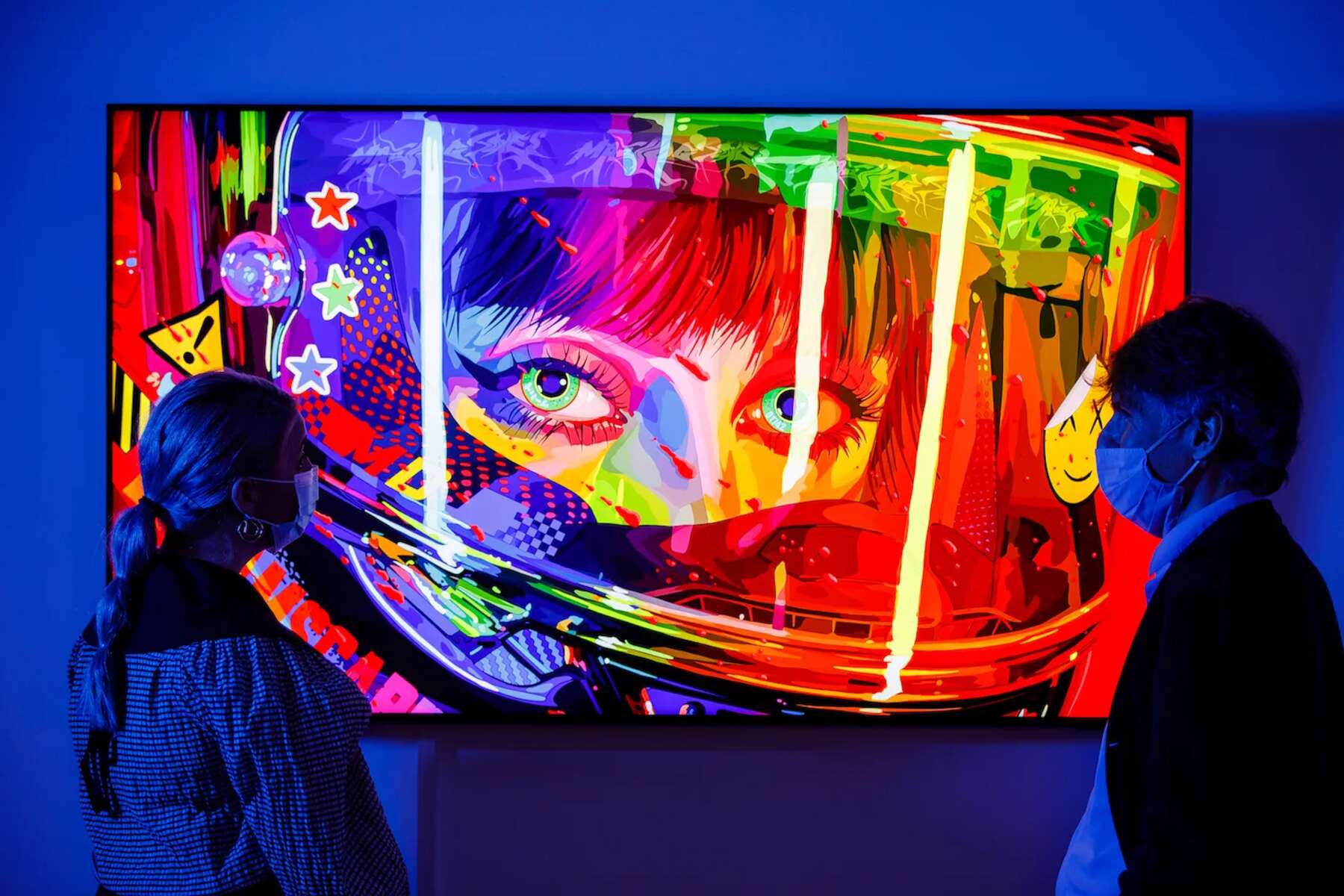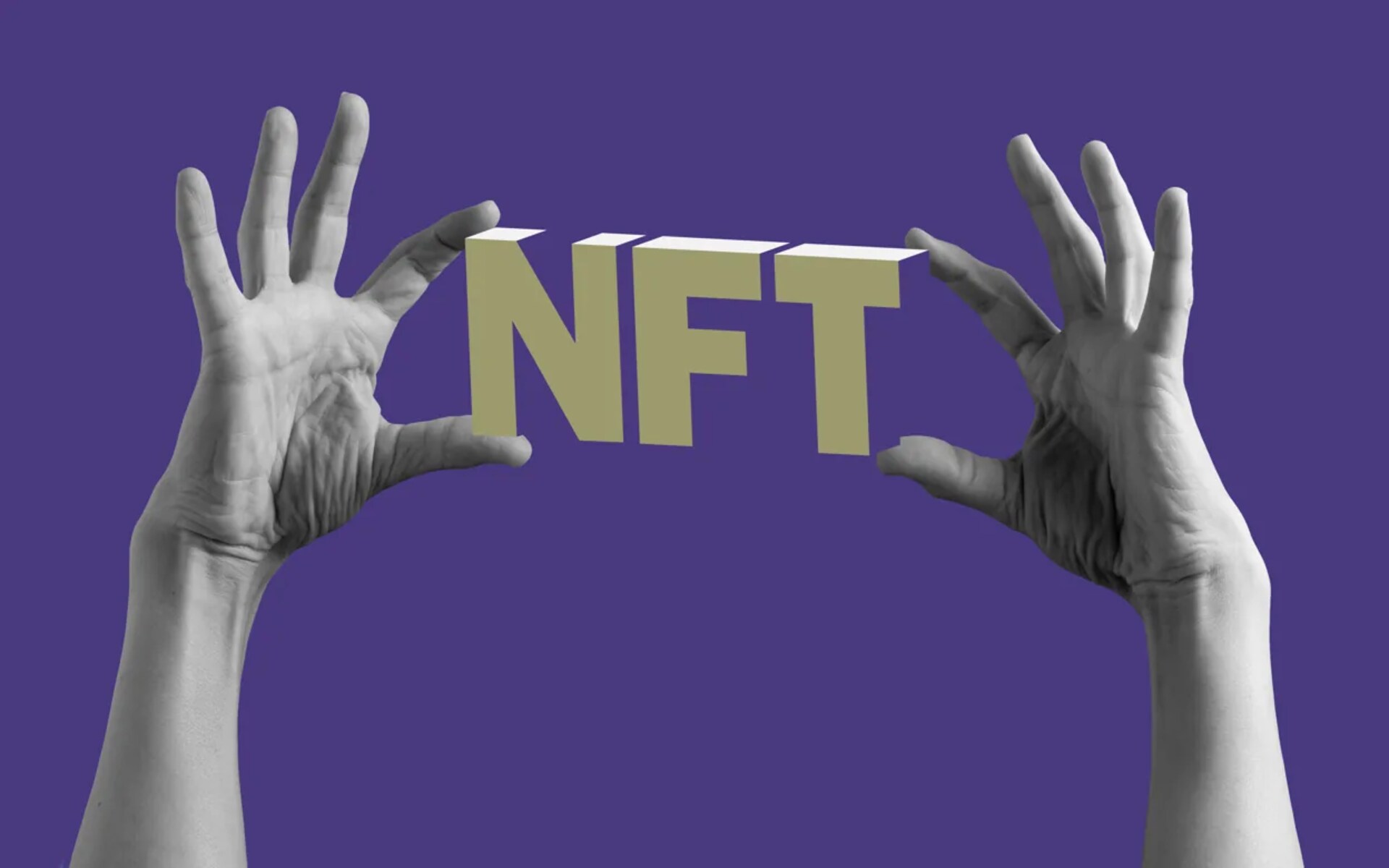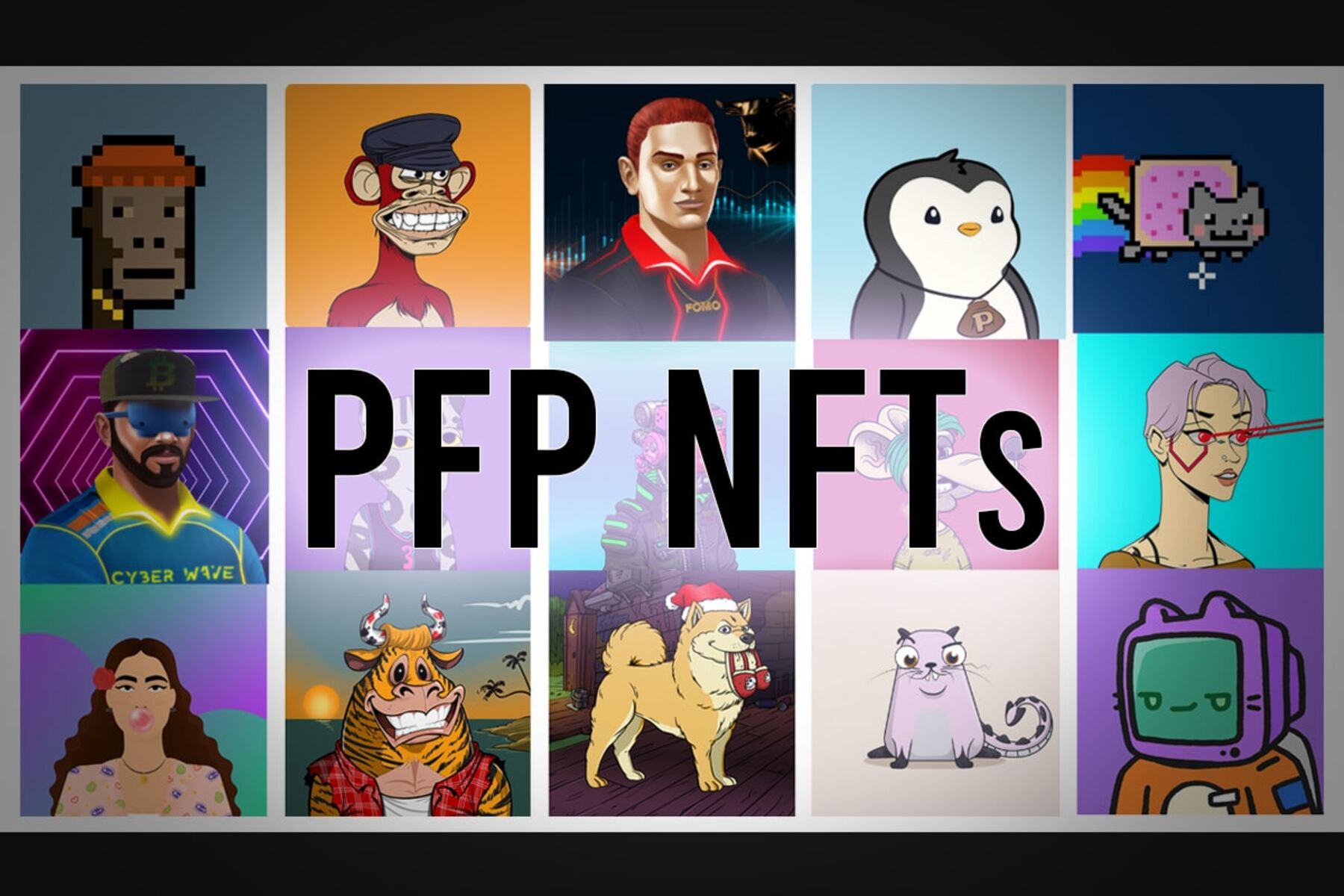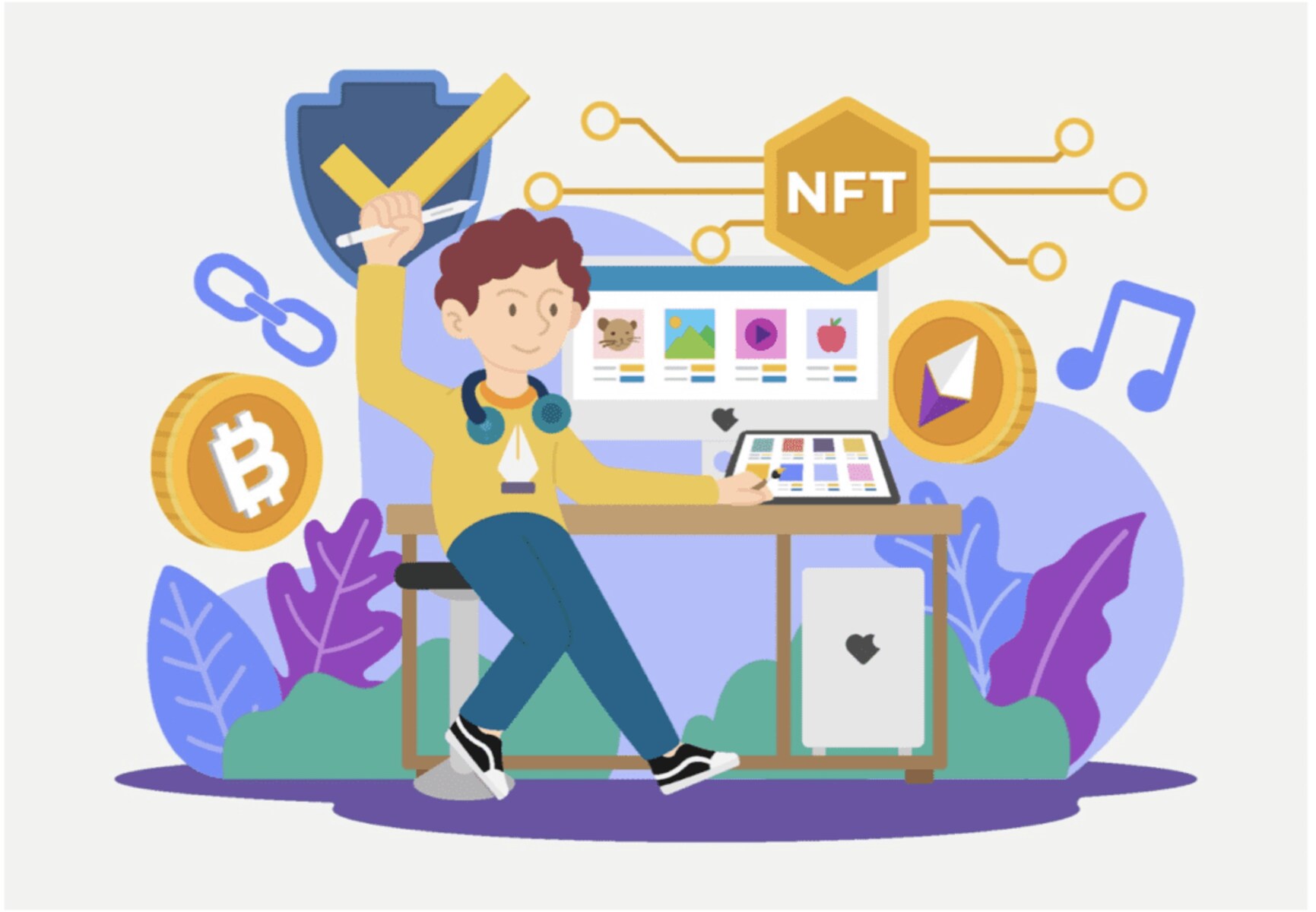Introduction
Welcome to the world of NFTs, where digital art and collectibles have taken the internet by storm. If you’ve been hearing buzz about NFTs lately and wondering what they are and why they’re making headlines, you’re in the right place. In this article, we’ll explore the fascinating world of non-fungible tokens (NFTs) and uncover the reasons behind their growing popularity.
Imagine owning a unique piece of digital artwork, a rare virtual collectible, or even a tokenized representation of a real-world asset. This is where NFTs come into play. NFTs, in simple terms, are digital assets that can be bought, sold, and owned, utilizing blockchain technology to provide proof of authenticity and scarcity.
Unlike cryptocurrencies such as Bitcoin or Ethereum, which operate on the principle of fungibility (where each unit is interchangeable with another), NFTs are one-of-a-kind items that cannot be replicated or replaced. Each NFT has a distinct value and ownership, making it a valuable and unique asset in the digital realm.
The rise of NFTs can be attributed to the growing interest in digital art and the desire for creators to establish ownership and monetization of their work in the digital space. With NFTs, artists and creators have a new way to distribute and sell their digital creations, allowing them to retain control and earn royalties even after the initial sale.
But it’s not just artists and creators who are getting in on the NFT action. Celebrities, athletes, and even big corporations are entering the NFT market, eager to capitalize on the trend and connect with their fans in a unique way. From virtual real estate to virtual trading cards, NFTs have opened up a world of possibilities for digital ownership and investment.
In this article, we’ll delve into the intricacies of NFTs, exploring their history, how they work, the benefits they offer, and the industries that are embracing them. We’ll also address common misconceptions and concerns surrounding NFTs and highlight some notable NFT sales. By the end, you’ll have a comprehensive understanding of NFTs and why they’re revolutionizing the digital landscape.
Definition of NFT
Before we dive deeper into the world of NFTs, let’s start with a clear definition. NFT stands for non-fungible token. To understand what makes NFTs unique, we need to first understand the concept of fungibility. In economics, fungibility refers to the interchangeability of goods or assets. For example, if you have two $10 bills, they are fungible because they hold the same value and can be exchanged for one another without any difference.
However, NFTs are different. Each NFT is a distinct digital asset that cannot be replicated or replaced because it is built on blockchain technology. Blockchain, most commonly associated with cryptocurrencies like Bitcoin and Ethereum, is a decentralized and transparent digital ledger that records and verifies transactions. When applied to NFTs, blockchain technology helps establish proof of authenticity and scarcity.
What sets NFTs apart is their uniqueness and indivisibility. Each NFT has a specific and verifiable value, making it one-of-a-kind. In other words, NFTs are like digital certificates of ownership that enable individuals to possess, buy, sell, and trade digital assets in a secure and transparent manner.
It’s worth mentioning that NFTs can represent a wide range of digital assets, including artwork, music, videos, virtual real estate, in-game items, collectibles, and more. NFTs have opened up a new realm of digital ownership, where people can invest in and own pieces of digital content that hold sentimental, artistic, or even financial value.
When someone purchases an NFT, they are essentially buying a token that represents their ownership of a specific digital asset. This ownership is authenticated and recorded on the blockchain, making it easy to track the provenance of the asset and verify its authenticity. NFTs allow creators and artists to establish ownership rights over their digital creations, providing them with a new way to monetize their work and earn royalties.
By owning an NFT, individuals can showcase their investment, display it in virtual galleries, and even loan, rent, or sell it on various NFT marketplaces. The value of an NFT is determined by various factors, including the reputation of the creator, the uniqueness of the asset, its demand in the market, and the perceived value by collectors and enthusiasts.
The concept of NFTs may seem complex at first, but as we delve deeper into their history and functioning, you’ll gain a clearer understanding of how they have disrupted the digital world.
History of NFTs
While the concept of blockchain technology was introduced with Bitcoin’s emergence in 2009, it wasn’t until 2017 that NFTs gained widespread attention. The launch of CryptoKitties, a blockchain-based game where users could buy, breed, and trade virtual cats, brought NFTs into the mainstream consciousness. This game became so popular that it overwhelmed Ethereum’s network with transactions and highlighted the potential of NFTs.
Following the success of CryptoKitties, the NFT market started to expand rapidly. Artists and creators recognized the value of NFTs in establishing digital ownership and began exploring their potential. In 2018, platforms like SuperRare, Rarible, and OpenSea emerged, providing artists with a marketplace to sell their digital artwork as NFTs.
One significant milestone in the history of NFTs was the sale of “Everydays: The First 5000 Days” by digital artist Beeple in March 2021. This artwork, a collage of 5,000 digital images created every day for over 13 years, was sold at a historic auction by the renowned auction house Christie’s for a staggering $69 million. This sale not only highlighted the market value of NFTs but also gained global media attention.
NFTs quickly expanded beyond the realm of art, finding applications in other industries. In the world of sports, athletes began tokenizing their assets, such as memorable moments and collectibles, allowing fans to own a piece of their favorite players’ history. NBA Top Shot, a blockchain-based platform for trading basketball highlight moments, gained significant traction and brought further attention to NFTs.
Moreover, musicians started utilizing NFTs to connect with their fans and monetize their work. Artists like Grimes, Kings of Leon, and 3LAU released albums or exclusive content as NFTs, providing unique experiences and additional perks for those who purchased them.
It’s important to note that while NFTs have experienced rapid growth and success, they have also faced criticism and skepticism. Some argue that the high energy consumption associated with blockchain technology, particularly in the case of certain cryptocurrencies, is harmful to the environment. Additionally, there have been concerns about copyright infringement and the potential for NFTs to be used to launder money or facilitate illegal activities. These issues have sparked ongoing debates and discussions surrounding the future of NFTs and their impact on various industries.
As we explore the different use cases and industries adopting NFTs in the following sections, it becomes evident that this emerging technology has the potential to reshape how we view and own digital assets.
How NFTs Work
Understanding how NFTs work requires a basic understanding of blockchain technology. NFTs are built on blockchain networks, most commonly Ethereum, which provide the infrastructure for creating and verifying the authenticity and ownership of digital assets.
When an artist or creator wants to tokenize their artwork or digital asset as an NFT, they go through a process called minting. Minting involves creating a unique digital token on the blockchain that represents ownership of the asset. The metadata associated with the NFT includes details such as the creator’s information, a description of the asset, and any additional attributes that make it unique.
Each NFT has a unique identifier, known as a token ID, that distinguishes it from other tokens on the blockchain. The token ID acts as a proof of authenticity and provides a digital record of ownership. This record is publicly stored on the blockchain, making it transparent and immutable.
Once the NFT is minted, it can be bought, sold, or traded on various NFT marketplaces. These marketplaces serve as platforms for creators and collectors to interact and conduct transactions. They provide a space for artists to showcase their work and for buyers to browse and purchase NFTs.
When someone purchases an NFT, the transaction is recorded on the blockchain and transferred to the buyer’s digital wallet. The digital wallet acts as a secure storage space for NFTs and enables owners to manage, display, and transfer their tokens.
One of the key advantages of NFTs is that they allow for the verification of provenance and ownership. Unlike traditional physical assets, where ownership history can be lost or forged, NFTs provide a transparent and permanent record of ownership. This means that the creator or artist can continue to earn royalties even if the NFT is sold or traded in the future. Each time an NFT is sold, a percentage of the sale price, known as a royalty fee, can be programmed into the smart contract attached to the NFT, ensuring that the creator receives a portion of future sales.
It’s important to note that NFTs can come with additional features and functionalities. Some NFTs are programmable, allowing for dynamic attributes or interactions. For example, a virtual pet NFT may require feeding or grooming, while a virtual land NFT may allow for building or development within a digital world.
While Ethereum is the most popular blockchain for NFTs, other blockchain networks are also emerging to offer NFT capabilities. Each blockchain has its own unique features, advantages, and limitations, allowing for different use cases and opportunities within the NFT ecosystem.
By leveraging blockchain technology, NFTs provide a secure and decentralized way to verify ownership, authenticate digital assets, and enable the transfer of unique digital items. This innovative approach to digital ownership has revolutionized various industries and fueled the rapid growth of the NFT market.
Benefits of NFTs
NFTs bring a range of benefits to creators, collectors, and industries alike, making them a compelling and transformative technology in the digital landscape. Let’s explore some of the key advantages of NFTs:
1. Ownership and Authenticity:
NFTs provide a verifiable and transparent way to establish ownership and prove the authenticity of digital assets. This is particularly valuable in the world of digital art, where artists can finally assert ownership and prevent unauthorized reproductions or forgeries.
2. Monetization Opportunities:
NFTs offer new avenues for artists, musicians, and creators to monetize their work. With traditional methods, creators often struggle to receive fair compensation for their digital creations. NFT marketplaces provide a direct and decentralized platform for creators to sell their work, with the potential for ongoing royalties.
3. Immutable Ownership History:
Thanks to blockchain technology, the entire ownership history of an NFT is permanently recorded and publicly accessible. This ensures a transparent and tamper-proof chain of custody, reducing the risk of fraud or disputes over ownership rights.
4. Accessible Global Markets:
NFTs have turned the digital world into a global marketplace, connecting creators and collectors from all corners of the world. Regardless of geographical boundaries, NFTs provide an opportunity for artists to reach a global audience and for collectors to access a wide range of digital assets.
5. Interactivity and Programmability:
Some NFTs come with programmable features, allowing for interactive experiences and functionality. This opens up possibilities for developers and creators to build immersive worlds, games, and virtual experiences that engage users in unique and dynamic ways.
6. Collectibility and Rarity:
NFTs revive the concept of collectibles in the digital realm. Collectors can now own rare and coveted digital items, such as virtual trading cards, unique skins for video games, or iconic moments from sports. The scarcity and exclusivity of NFTs add value and desirability to these digital collectibles.
7. Decentralization and Blockchain Security:
Utilizing blockchain technology, NFTs are decentralized and secured by cryptographic algorithms. This prevents fraud, counterfeiting, and unauthorized modifications, giving both creators and buyers peace of mind in the authenticity and ownership of digital assets.
8. New Forms of Expression:
NFTs have unleashed a wave of creativity and innovation. Artists and creators can now explore new mediums and formats for expressing themselves digitally, pushing the boundaries of traditional art and creativity.
The benefits of NFTs extend beyond these points, and as the technology evolves and matures, we can anticipate even more exciting opportunities and advancements in the world of digital ownership and expression.
Common Misconceptions about NFTs
As with any new technology, there are bound to be misconceptions and misunderstandings surrounding NFTs. Let’s address some of the common misconceptions and provide clarification:
1. NFTs are Just Digital Art:
While NFTs gained popularity in the art world, they have expanded far beyond that. NFTs can represent a wide range of digital assets, including music, videos, virtual real estate, virtual goods in games, collectibles, and more. The versatility of NFTs opens up opportunities for various industries to leverage this technology.
2. NFTs Can Be Replicated or Downloaded:
Unlike digital files that can be easily copied or downloaded, NFTs are built on blockchain technology, providing proof of authenticity and uniqueness. While anyone can view and download the digital file associated with an NFT, owning the NFT itself grants the individual ownership and provenance of the original digital asset.
3. NFTs Are Inherently Valuable:
The value of an NFT is subjective and determined by factors such as perceived value, scarcity, demand, and the reputation of the creator. Just because an asset is tokenized as an NFT does not guarantee that it will hold significant monetary value. The NFT market can be volatile, and the value of NFTs can fluctuate over time.
4. NFTs are a Bubble or a Fad:
While NFTs have seen a surge in popularity, comparing them to past bubbles or dismissing them as a fleeting trend oversimplifies the potential of this technology. NFTs have introduced a new paradigm of digital ownership and have found applications in various industries beyond art. As technology evolves, NFTs are likely to continue shaping the digital landscape.
5. NFTs are Environmentally Unfriendly:
There is a common misconception that NFTs contribute to the environmental impact often associated with blockchain technology. While it is true that certain blockchain networks, such as Ethereum, consume energy, efforts are being made to address these concerns through energy-efficient solutions and the exploration of alternative blockchains with lower carbon footprints.
6. Anyone Can Create and Sell NFTs:
While it is technologically feasible for anyone to create and sell NFTs, establishing value and gaining recognition in the market is not guaranteed. Just like in traditional markets, factors like reputation, quality, and demand play a significant role in the success of an NFT. Building an audience and attracting buyers requires effort and strategic marketing.
7. NFT Ownership Equals Copyright Ownership:
Buying an NFT does not automatically grant copyright ownership, unless explicitly stated by the creator. Creators retain their intellectual property rights, and any commercial reproduction or distribution of the underlying content may require additional permissions or licenses. NFT ownership primarily signifies ownership of a digital item and the ability to prove ownership and trade the NFT.
8. NFTs are Exclusively for the Wealthy:
While high-profile sales and news headlines may give the impression that NFTs are only accessible to the wealthy, the reality is that NFTs span a wide range of price points. NFT marketplaces offer a diverse selection of digital assets at various price levels, providing opportunities for collectors with different budgets to participate in the market.
By debunking these misconceptions, we can gain a clearer understanding of the true potential and intricacies of NFTs, paving the way for informed discussions and further exploration of this transformative technology.
Industries that Utilize NFTs
While NFTs have gained significant attention in the art world, their impact extends far beyond that. Here are some industries that are embracing and utilizing NFTs:
1. Art and Collectibles:
The art industry has been one of the primary adopters of NFTs, allowing artists to tokenize their artwork and sell it directly to collectors. NFTs provide a new avenue for artists to monetize their work and establish ownership rights, revolutionizing the way art is bought and sold.
2. Gaming:
The gaming industry has embraced NFTs to enhance in-game economies and provide players with true ownership of virtual assets. NFTs enable players to buy, sell, and trade unique items, such as skins, weapons, and virtual real estate, creating a thriving marketplace within gaming ecosystems.
3. Music and Entertainment:
NFTs have introduced novel ways for musicians and entertainers to connect with their fans. Artists can release limited edition albums, exclusive content, or virtual concert experiences as NFTs, providing additional value and unique experiences for their audience.
4. Sports and Memorabilia:
NFTs have transformed the sports industry by tokenizing iconic moments, collectibles, and virtual assets. Athletes and sports leagues are utilizing NFTs to offer fans a chance to own unique digital memorabilia, creating a new way to engage with sports fandom.
5. Virtual Real Estate:
The virtual real estate market is thriving with the advent of NFTs. Virtual worlds and metaverses allow users to purchase and own virtual land or properties as NFTs, enabling individuals to build, create experiences, and participate in a digital economy.
6. Fashion and Luxury Brands:
NFTs present opportunities for fashion and luxury brands to offer digital representations of their products or limited edition digital collectibles. Brands can collaborate with artists, create virtual fashion shows, or provide unique virtual items as NFTs, expanding their reach into the digital realm.
7. Publishing and Journalism:
The publishing industry is exploring the potential of NFTs to authenticate and distribute digital books, articles, and other written content. NFTs allow authors to establish ownership of their creative works and provide readers with exclusive access or special editions.
8. Charity and Non-Profit Organizations:
NFTs have also made their way into the realm of charity and non-profit organizations. NFT auctions and collaborations with artists have been used to raise funds and awareness for various causes, leveraging the growing popularity of NFTs to make a positive impact.
These are just a few examples of the industries that have embraced NFTs. The versatility and potential of NFTs extend to many other sectors, unlocking new possibilities for ownership, monetization, and engagement in the digital age.
Challenges and Concerns Surrounding NFTs
While NFTs have garnered significant attention and adoption, they also face several challenges and concerns that need to be addressed. Let’s explore some of the main issues surrounding NFTs:
1. Environmental Impact:
One of the key concerns is the environmental impact of NFTs, particularly their association with blockchain networks that consume significant amounts of energy. The high energy consumption of certain blockchains, such as Ethereum, raises questions about the sustainability of NFTs and their carbon footprint.
2. Scalability and Blockchain Congestion:
As the popularity of NFTs grows, blockchain networks can face congestion, resulting in increased transaction fees and slower processing times. This scalability challenge needs to be addressed to ensure smoother and more cost-effective experiences for creators and collectors.
3. Lack of Regulation and Standards:
The NFT market is currently largely unregulated, which can lead to concerns regarding fraud, scams, and counterfeit assets. There is a need for industry standards, guidelines, and regulations to protect both creators and buyers and establish trust within the market.
4. Copyright Infringement:
With the ease of tokenizing digital assets as NFTs, there is an increased risk of copyright infringement. It can be challenging to verify the origin and ownership of certain digital assets, leading to potential legal issues and disputes over intellectual property rights.
5. Market Volatility and Speculation:
The NFT market can be highly volatile, with prices fluctuating dramatically. This volatility raises concerns about the potential for speculative bubbles and the stability of the market. There is a need for careful consideration and due diligence when entering the NFT market.
6. Lack of Accessibility and Inclusivity:
While NFTs have seen significant growth, they can still be seen as a niche market accessible only to those with knowledge of cryptocurrencies and blockchain technology. Addressing the barriers to entry and making NFTs more accessible and inclusive will be important for the long-term sustainability and adoption of this technology.
7. Potential for Money Laundering and Illicit Activities:
As with any digital asset, there is a risk of NFTs being used for money laundering or other illicit activities. The anonymity provided by blockchain technology can create challenges in enforcing anti-money laundering regulations and ensuring the legitimacy of transactions.
8. Lack of Long-Term Value:
There are concerns about the long-term value and viability of NFTs. As with any emerging technology, there is uncertainty about how the market will evolve and whether certain NFTs will retain their value over time. Industry developments and market trends will play a crucial role in determining the long-term value proposition of NFTs.
Addressing these challenges and concerns is essential to foster trust, sustainability, and responsible growth within the NFT ecosystem. Industry collaboration, transparency, and a proactive approach to regulation and standards can help ensure the continued success and positive impact of NFTs.
Famous NFT Sales and Examples
The world of NFTs has witnessed several remarkable sales that have captured global attention. Here are some famous NFT sales and examples that have made headlines:
1. Beeple’s “Everydays: The First 5000 Days”:
In March 2021, digital artist Mike Winkelmann, known as Beeple, sold a collage of his digital artwork titled “Everydays: The First 5000 Days” as an NFT at a historic auction conducted by Christie’s. The artwork fetched an astonishing $69 million, solidifying the value and potential of NFTs in the art world.
2. CryptoPunk #7804:
CryptoPunks, one of the earliest NFT projects, gained prominence when one of its 10,000 unique 24×24 pixel art characters, CryptoPunk #7804, was sold for over $7.5 million in March 2021. This sale highlighted the collectible nature and value of NFT-based digital art.
3. Jack Dorsey’s First Tweet:
Twitter CEO Jack Dorsey auctioned his first tweet, “just setting up my twttr,” as an NFT. The tweet, an iconic moment in internet history, was sold for $2.9 million in March 2021, showcasing the concept of owning a digital artifact of significant cultural importance.
4. NBA Top Shot Moments:
NBA Top Shot, a blockchain-based platform for collecting and trading NBA highlights, has seen a series of high-value NFT sales. One of the most notable sales was a LeBron James dunk highlight that sold for over $200,000, demonstrating the market demand for unique sports collectibles.
5. Kings of Leon’s “When You See Yourself” Album:
As a pioneering move in the music industry, rock band Kings of Leon released their album “When You See Yourself” as an NFT, offering exclusive perks to those who purchased the tokenized album. The release marked a significant milestone for NFTs in the music world.
6. Mars House:
A digital representation of a virtual home called Mars House was sold as an NFT for over $500,000. This sale showcased the growing interest in virtual real estate and the potential for owning and trading unique digital properties within virtual worlds.
7. CryptoKitties:
The Blockchain-based game CryptoKitties became a sensation in 2017, with users buying, breeding, and trading virtual cats. Some rare CryptoKitties have sold for hundreds of thousands of dollars, spotlighting the market for unique virtual collectibles and the demand for crypto-powered gaming experiences.
8. Art Blocks Curated Drop:
Art Blocks, a platform for generative art on the Ethereum blockchain, has seen numerous successful curated drop sales. The platform offers one-of-a-kind algorithmically generated art pieces that have gained attention and sold for significant sums, showcasing the marriage of art and technology within the NFT space.
These examples are just a glimpse into the diverse and exciting world of NFT sales and their impact across various industries. The ever-evolving NFT market continues to redefine the concept of digital ownership and pave the way for new possibilities in the digital realm.
Conclusion
The rise of NFTs has brought about a paradigm shift in the digital landscape, revolutionizing the way we view and own digital assets. From art and gaming to music and sports, NFTs have found applications in diverse industries, unlocking new opportunities for creators, collectors, and enthusiasts alike.
Through blockchain technology, NFTs provide a transparent and verifiable way to establish ownership and authenticity of digital assets. They have empowered artists to monetize their work, connect with fans, and retain control over their creations. Collectors can now own unique and scarce digital items, adding value to their collections and participating in dynamic digital marketplaces.
While NFTs offer numerous benefits and hold tremendous potential, challenges and concerns exist. Environmental impact, scalability, regulations, and copyright issues are among the areas that need to be addressed and balanced to ensure the sustainability and responsible growth of the NFT ecosystem.
As the NFT market continues to evolve, it’s important for creators, collectors, platforms, and regulators to collaborate and establish industry standards, guidelines, and best practices. This collaborative effort will foster trust, protect intellectual property rights, and provide a more inclusive and accessible environment for all participants.
The world of NFTs is still in its early stages, with exciting developments yet to come. The technology has the potential to reshape how we perceive collectibles, ownership, and creativity in the digital age. As blockchain advances and innovative use cases emerge, we can expect NFTs to continue pushing the boundaries of digital ownership and expression.
Whether you’re an artist, a collector, or simply curious about this emerging technology, exploring the world of NFTs can be a fascinating and rewarding journey. Just remember to stay informed, conduct due diligence, and approach the NFT market with caution and thoughtful consideration.

























